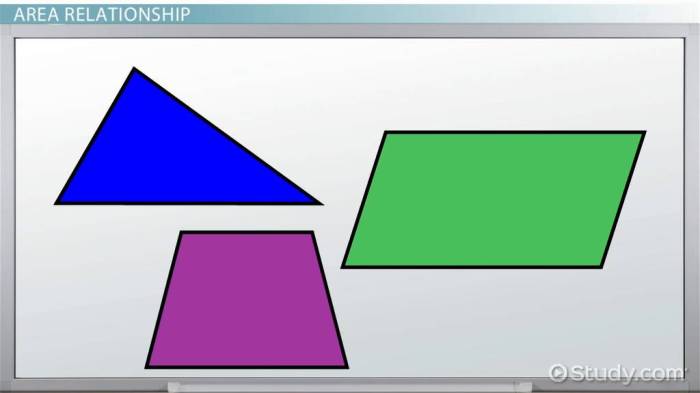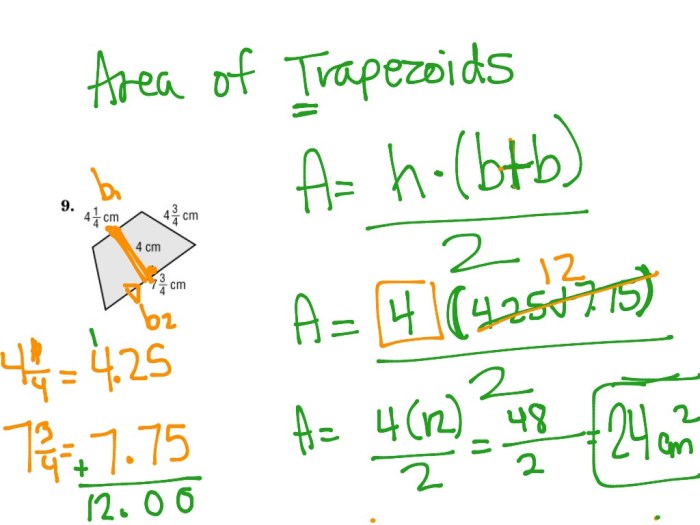Area of parallelograms triangles and trapezoids worksheet answers – Embark on a mathematical expedition with our comprehensive worksheet answers for parallelograms, triangles, and trapezoids! This guide empowers you to conquer the intricacies of area calculations, unraveling the mysteries of base, height, and their profound impact on geometric shapes.
Our journey begins with parallelograms, where we delve into formulas that unlock their hidden dimensions. Triangles, with their captivating shapes, reveal their secrets through precise equations. Finally, trapezoids, with their unique blend of parallel and non-parallel sides, yield to our calculations, revealing their true nature.
Area of Parallelograms, Triangles, and Trapezoids: Area Of Parallelograms Triangles And Trapezoids Worksheet Answers

This article provides a comprehensive overview of the formulas and concepts related to the area of parallelograms, triangles, and trapezoids. We will explore the definitions of these shapes, explain the concepts of base and height, and demonstrate the use of formulas through examples.
Area of Parallelograms
A parallelogram is a quadrilateral with opposite sides parallel. The area of a parallelogram is given by the formula:
A = b
h
where:
- A is the area of the parallelogram
- b is the length of the base
- h is the height of the parallelogram (the perpendicular distance from the base to the opposite side)
For example, if a parallelogram has a base of 10 cm and a height of 5 cm, its area would be 10 cm – 5 cm = 50 square cm.
Area of Triangles, Area of parallelograms triangles and trapezoids worksheet answers
A triangle is a polygon with three sides. The area of a triangle is given by the formula:
A = (1/2)
- b
- h
where:
- A is the area of the triangle
- b is the length of the base
- h is the height of the triangle (the perpendicular distance from the base to the opposite vertex)
For example, if a triangle has a base of 6 cm and a height of 4 cm, its area would be (1/2) – 6 cm – 4 cm = 12 square cm.
It is important to note that the area of a triangle is half the area of a parallelogram with the same base and height.
Area of Trapezoids
A trapezoid is a quadrilateral with two parallel sides. The area of a trapezoid is given by the formula:
A = (1/2)
- (b1 + b2)
- h
where:
- A is the area of the trapezoid
- b1 is the length of the first base
- b2 is the length of the second base
- h is the height of the trapezoid (the perpendicular distance between the two parallel sides)
For example, if a trapezoid has bases of 8 cm and 12 cm, and a height of 5 cm, its area would be (1/2) – (8 cm + 12 cm) – 5 cm = 50 square cm.
It is important to note that the area of a trapezoid is also half the area of a parallelogram with the same bases and height.
Clarifying Questions
What is the formula for the area of a parallelogram?
Area = base × height
How do I find the area of a triangle?
Area = 1/2 × base × height
What is the relationship between the area of a trapezoid and the area of a parallelogram?
The area of a trapezoid is equal to half the area of a parallelogram with the same base and height.


